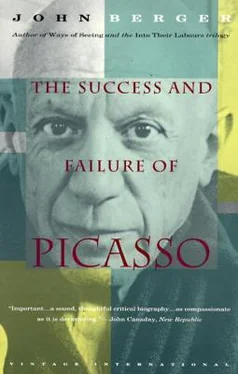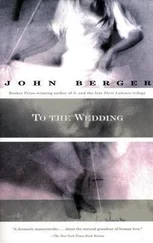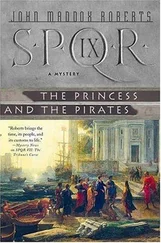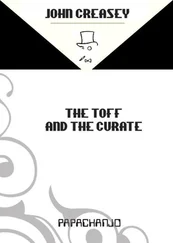Finally, we can begin to understand Picasso’s fundamental difficulty: a difficulty that has been so disguised that scarcely anybody has recognized it. Imagine an artist who is exiled from his own country; who belongs to another century, who idealizes the primitive nature of his own genius in order to condemn the corrupt society in which he finds himself, who becomes therefore self-sufficient, but who has to work ceaselessly in order to prove himself to himself. What is his difficulty likely to be? Humanly he is bound to be very lonely. But what will this loneliness mean in terms of his art? It will mean that he does not know what to paint. It will mean that he will run out of subjects. He will not run out of emotion or feelings or sensations; but he will run out of subjects to contain them. And this has been Picasso’s difficulty. To have to ask of himself the question: What shall I paint? And always to have to answer it alone.
1This and the quotation on this page are both taken from one of the most popular of the expensive books on Picasso: Picasso, by Wilhelm Boeck and Jaime Sabartes (Thames & Hudson, 1961).
2This and most of the other quotations from statements by Picasso are taken from the very well documented Picasso: Fifty Years of His Art , by Alfred H. Barr (Museum of Modern Art, New York, 1946).
3See footnote, this page
4For Picasso’s cultural background in Spain, see Picasso; The Formative Years, by Phoebe Pool (Studio Books, 1962).
5See Letters of Juan Gris, edited and printed by Douglas Cooper.
6See Lorca, Penguin Books, 1960.
7See Revolt of the Masses, by Ortega y Gasset (Allen & Unwin, 1932 ).
8For further analysis of such poverty and loneliness, see Vagrancy, by Philip O’Connor (Penguin Books, 1963).
9Quoted in The Spanish Labyrinth , by Gerald Brenan (Cambridge University Press, 1943).
10In An Enquiry Concerning the Principles of Natural Knowledge (Cambridge University Press, 1925).
11This quotation comes from Heisenberg’s Physics and Philosophy (Allen & Unwin, 1959): a profound book accessible to the layman.
12See Les Peintres Cubistes (Paris, 1913).
13For the role of magic in art, see The Necessity of Art , by Ernst Fischer (Penguin Books, 1963).
14See Roland Penrose’s useful but entirely uncritical biography, Picasso: His Life and Work (Gollancz, 1958).
15Faber, 1961.
16For a more detailed study of Léger’s view of modern man, see this author’s articles in the April and May 1963 issues of Marxism Today.
is now free to paint anything he chooses. There are scarcely any forbidden subjects, and today everybody is prepared to admit that a painting of some fruit can be as important as a painting of a hero dying. The Impressionists did as much as anybody to win this previously unheard-of freedom for the artist.
Yet, by the next generation, painters began to abandon the subject altogether, and paint abstract pictures. Today the majority of pictures painted are abstract.
Is there a connexion between these two developments? Has art gone abstract because the artist is embarrassed by his freedom? Is it that, because he is free to paint anything, he doesn’t know what to paint? Apologists for abstract art often talk of it as the art of maximum freedom. But could this be the freedom of the desert island?
It would take too long to answer these questions properly. I believe there is a connexion. Many things have encouraged the development of abstract art. Among them has been the artists’ wish to avoid the difficulties of finding subjects when all subjects are equally possible.
I raise the matter now because I want to draw attention to the fact that the painter’s choice of a subject is a far more complicated question than it would at first seem. A subject does not start with what is put in front of the easel or with something which the painter happens to remember. A subject starts with the painter deciding he would like to paint such-and-such because for some reason or other he finds it meaningful. A subject begins when the artist selects something for special mention. (What makes it special or meaningful may seem to the artist to be purely visual — its colours or its form.) When the subject has been selected, the function of the painting itself is to communicate and justify the significance of that selection.
It is often said today that subject matter is unimportant. But this is only a reaction against the excessively literary and moralistic interpretation of subject matter in the nineteenth century. In truth the subject is literally the beginning and end of a painting. The painting begins with a selection (I will paint this and not everything else in the world); it is finished when that selection is justified (now you can see all that I saw and felt in this and how it is more than merely itself).
Thus, for a painting to succeed it is essential that the painter and his public can agree about what is significant. The subject may have a personal meaning for the painter or individual spectator; but there must also be the possibility of their agreement on its general meaning. It is at this point that the culture of the society and period in question precedes the artist and his art. Renaissance art would have meant nothing to the Aztecs — and vice versa. (If, to some extent, a few intellectuals can appreciate them both today it is because their culture is an historical one: its inspiration is history and therefore it can include within itself, in principle if not in every particular, all known developments to date.)
When a culture is secure and certain of its values, it presents its artists with subjects. The general agreement about what is significant is so well established that the significance of a particular subject accrues and becomes traditional. This is true, for instance, of reeds and water in China, of the nude body during the Renaissance, of the animal head in Africa. Furthermore, in such cultures the artist is unlikely to be a free agent: he will be employed for the sake of particular subjects , and the problem, as we have just described it, will not occur to him.
When a culture is in a state of disintegration or transition the freedom of the artist increases — but the question of subject matter becomes problematic for him: he, himself, has to choose for society. This was at the basis of all the increasing crises in European art during the nineteenth century. It is too often forgotten how many of the art scandals of that time were provoked by the choice of subject (Géricault, Courbet, Daumier, Degas, Lautrec, Van Gogh, etc.).
By the end of the nineteenth century there were, roughly speaking, two ways in which the painter could meet this challenge of deciding what to paint and so choosing for society. Either he identified himself with the people and so allowed their lives to dictate his subjects to him; or he had to find his subjects within himself as painter. By people I mean everybody except the bourgeoisie. Many painters did of course work for the bourgeoisie according to their copy-book of approved subjects, but all of them, filling the Salon and the Royal Academy year after year, are now forgotten, buried under the hypocrisy of those they served too sincerely.
Those who identified themselves with the people (Van Gogh, or Gauguin in the South Seas) found new subjects and renewed, in the light of the lives of those for whom they saw, old subjects. A landscape by Van Gogh has a totally different meaning (and reason for being selected) from a landscape by Poussin.
Those who found their subjects within themselves as painters (Seurat or Cézanne) strove to make their method of seeing the new subject of their pictures. In so far as they succeeded in doing this, as we saw in the case of Cézanne, they changed the whole relationship between art and nature, and made it possible for every spectator to identify himself with the vision of the painter.
Читать дальше












